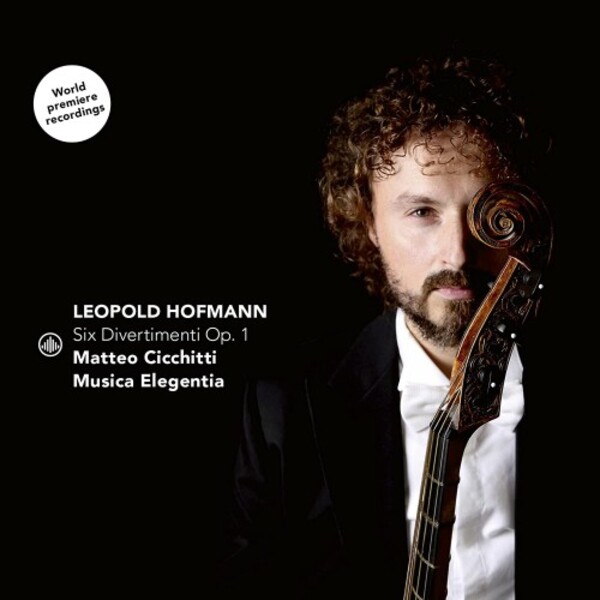
L Hofmann - 6 Divertimenti, op.1
£14.20
In stock - available for despatch within 1 working day
Despatch Information
This despatch estimate is based on information from both our own stock and the UK supplier's stock.
If ordering multiple items, we will aim to send everything together so the longest despatch estimate will apply to the complete order.
If you would rather receive certain items more quickly, please place them on a separate order.
If any unexpected delays occur, we will keep you informed of progress via email and not allow other items on the order to be held up.
If you would prefer to receive everything together regardless of any delay, please let us know via email.
Pre-orders will be despatched as close as possible to the release date.
Label: Challenge Classics
Cat No: CC72931
Format: CD
Number of Discs: 1
Genre: Chamber
Release Date: 12th May 2023
Contents
Artists
Matteo CicchittiMusica Elegentia
About
In 1769, Leopold Hofmann (Vienna, 1738-Vienna, 1793) succeeded Georg Christoph Wagenseil (whose pupil he had been) as harpsichord and organ teacher to the imperial family and in 1772 he became Organist and Chapel Master at St Stephen's Cathedral. In 1783, he retired from the music profession. As one might reasonably expect from a pupil of Wagenseil, Leopold was an excellent harpsichordist and organist; nevertheless, he concentrated on other genres including, in particular, string music. His chamber music production for strings is particularly noteworthy.
The Six Divertimenti, op.1, were published in 1775 by Johann Julius Hummel whose publishing house had offices in Amsterdam and Berlin. Op.1 consists of six trios for strings: they belong to the genre of the divertimento. As Heinrich Christoph Koch illustrated in the Musikalisches Lexikon (1802), the 'Divertimento' was a kind of polite dialogue between instruments, not polyphonic and not hinged on any complicated process of motivic elaboration, but rather conceived for an amiable and pleasant listening. Even the divertimento, therefore, became part of the formal testimonials of the galant style, with which it shared a taste for pleasantness, an inclination towards much more transparent and airy musical textures than the preceding baroque period and, from a sociological point of view, an openness towards the world of amateurs, i.e. those aristocratic or upper-class performers. This is the galant context in which Leopold Hofmann's compositions fitted perfectly.
As far as the instrumentation is concerned, Op.1 attests to two different types of compositions: the first three are for viola, cello and violone, and the remaining for violin, cello and violone. Variable arrangements are also recorded with regard to the number and type of movements into which each divertimento is subdivided: ranging from Trio no.5 consisting of only two movements to no.1, which, on the other hand, has five. On the musical texture front, there is a partially retrospective treatment that, in some respects, seems to echo that of the Baroque trio sonata. The real leading role is, in fact, handed over to the two high instruments.
Error on this page? Let us know here
Need more information on this product? Click here